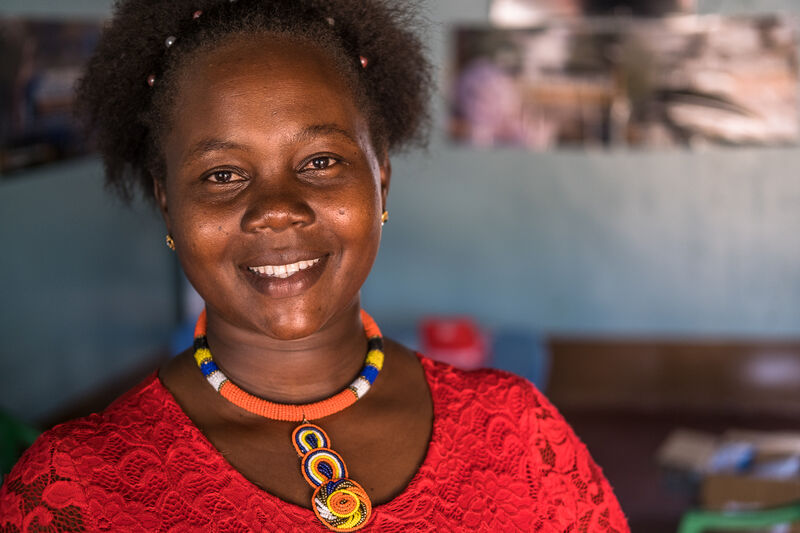Miriam Chebet lives in West Pokot County, Kenya. Trained by Deutsche Stiftung Weltbevölkerung (DSW), Miriam now works with young people in her community, empowering them to stand up for their rights. One of the issues she focuses on is female genital mutilation (FGM). In this interview, she shares her experiences and solutions in the fight against this harmful practice, which still affects millions of women and girls worldwide.
How widespread is FGM in your region?
Miriam Chebet: FGM practice has decreased significantly over recent years due to the government and non-governmental organisations carrying out campaigns against the practice.
How does FGM affect women and girls?
Miriam Chebet: There is of course a lot of pain, as the procedure is often performed without anaesthetic. Heavy bleeding is a frequent consequence and later on, pain during sex. The survivors also often suffer from fistulas. Some girls even die after undergoing FGM.
Do laws exist to protect women and girls against FGM? Do people abide by them? What is being done to ensure girls’ and womens’ safety?
Miriam Chebet: Kenya enacted the prohibition of Female Genital Mutilation Act in 2011 and adopted a revised National Policy for Eradication of FGM in line with Sustainable Development Goal 5 (Achieve gender equality and empower all women and girls). However, despite the move, FGM is still prevalent with most women and girls still being circumcised in homes by traditional circumciser and birth attendants.
In einem früheren Interview aus dem Jahr 2021 hast Du erzählt, dass die Beschneidungen bei Euch teilweise am helllichten Tage durchgeführt werden. Ist das das immer noch der Fall?
Miriam Chebet: Das Verbot durch das kenianische Gesetz hat es für die Täter schwerer gemacht. Allerdings führt dies nun teilweise dazu, dass Mädchen einfach sehr früh verheiratet werden und die Beschneidung schließlich in den Häusern ihrer Ehemänner erfolgt.
Wie kann es gelingen, FGM vollständig zu eliminieren?
Miriam Chebet: Wir müssen weiter daran arbeiten, Mädchen und Frauen über ihr Recht aufzuklären, dass sie und nur sie über ihren Körper entscheiden. Darüber hinaus müssen wir versuchen, die Traditionen aufzubrechen und dabei auf die Unterstützung der älteren Generation bauen. Bildung ist natürlich extrem wichtig, die Kinder müssen zur Schule gehen. Dort können auch Projekte helfen, um über FGM aufzuklären.
How do you educate people in your community about the harmfulness of FGM? Who are you targeting with your outreach work? Are there any new ideas and approaches in the fight against FGM?
Miriam Chebet: I am a member of the Community Action Committee. As i have undergone FGM myself, I ensure that information about the effects of FGM and how we can live normally without the practice has reached my people in their villages and churches. We target every person; we don’t separate because everyone needs to get the information. It’s a community thing and we should deal with it as a community.
More facts about FGM in Kenya: The prevalence of FGM is higher among girls with no education (56 per cent) compared to those with a qualification higher than secondary education (6 per cent). The prevalence of FGM is higher in rural areas, where the rate is 18 per cent, compared to 10 per cent in urban areas. The prevalence of FGM in Kenya has fallen from 21 per cent (2014) to 15 per cent. In West Pokot County, the figures have fallen drastically: From 74 per cent (2014) to 44 per cent (2022) – although this means that FGM still affects almost half of all women between the ages of 15 and 49 in the region. In West Pokot, the average age of girls undergoing FGM is nine. (Source: Kenya Demographic and Health Survey, 2022)
Photo: © DSW/Brian Otieno

